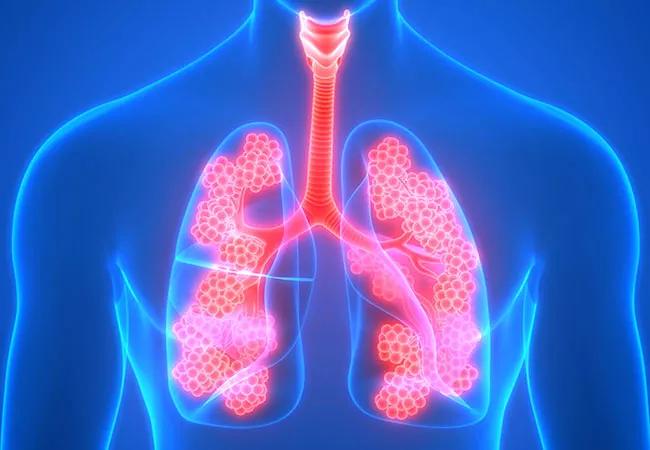
The first multipurpose robotic surgery system received FDA approval in 2000, and it is now used in nearly 70 clinical situations. Today close to 10% of surgical procedures in the United States are performed using some form of robotic technology, and one of every two lobectomies performed in the U.S. are done robotically, according to the Premier Healthcare Database in 2020.
Advertisement
Cleveland Clinic is a non-profit academic medical center. Advertising on our site helps support our mission. We do not endorse non-Cleveland Clinic products or services. Policy
“Robotic-assisted surgery is becoming the standard of surgical care in many specialties, including for common procedures like anatomical lung resections, prostatectomy and hysterectomy,” says Luis Marcelo Argote-Greene, MD, a thoracic surgeon who has been performing robotic-assisted surgery since 2018. “It is also gaining ground in thoracic surgery where it is applied increasingly to procedures like esophagectomy and mediastinal tumor resection.”
Earlier this year, Dr. Argote-Greene was appointed Regional Director of Thoracic and Esophageal Surgery at Cleveland Clinic Indian River Hospital. He leads a team offering a full range of surgical options – including robotic-assisted surgery – for the management and treatment of benign and malignant thoracic conditions of the lung, esophagus, and mediastinum.
In June Dr. Argote-Greene and his team performed Indian River Hospital’s first robotic sublobar anatomic robotic segmentectomy for lung cancer. The procedure has recently gained the support of thoracic surgeons for treating early-stage lung cancers.
“A growing body of research demonstrates the same survival rate with segmentectomy as with lobectomy for patients with tumors smaller than 2 centimeters,” explains Dr. Argote-Greene. “With the robotic approach, we are able to precisely dissect the segmental bronchopulmonary structures and mediastinal nodes while preserving healthy tissue and lung function.”
Many thoracic surgeries are now regularly performed with a minimally invasive approach, with or without robotic technology, notes Dr. Argote-Greene. A review of the Society of Thoracic Surgery database, for example, shows that 55% of all lobectomies performed in the database between 2010 and 2013 were done either via video-assisted thoracoscopic surgery (VATS) or robotic-assisted surgery (RAS).
Advertisement
“When used for lung resection of malignancy, data show robotic-assisted surgery yields comparable survival outcomes to open or thoracoscopic approaches,” he says. “Meanwhile patients typically benefit from smaller incisions and scars, less pain, and shorter recovery and hospital stays.”
In addition to lung resections (lobectomy, wedge resection, and segmentectomy), the robotic-assisted approach also can be used for esophagectomy, giant hiatal hernias, achalasia, esophageal diverticula, mediastinal tumor resections, and thymectomy. “We can even apply this approach to medical zebras, such as thymomas and bronchogenic cysts,” says Dr. Argote-Greene.
Other forms of mediastinal tumors that can be treated using RAS include thymic carcinoma, chest wall and pleural tumors, migrating thyroid tumors to the chest, schwannomas and other neurogenic tumors, foregut cysts, and benign and malignant tumors of the chest wall.
“At Cleveland Clinic Indian River Hospital, we have a multidisciplinary team to care for patients with these rare conditions, including highly skilled pathologists experienced in differentiating thymoma from Hodgkin disease or other lymphoma,” says Dr. Argote-Greene.
As with robotic-assisted lung resection, studies have demonstrated advantages of robotic-assisted mediastinal surgery over other surgical approaches. Dr. Argote-Greene was part of a team of researchers comparing the outcomes of mediastinal tumor resection when using RAS and VATS. Their findings were published in the June issue of The Annals of Thoracic Surgery.
Advertisement
“We used the National Cancer Database to look at outcomes data for patients who underwent a minimally invasive surgical approach for any mediastinal tumor from 2010 to 2016 and found fewer adverse outcomes with robotic-assisted surgery,” explains Dr. Argote-Greene. “Less blood loss, shorter length of stay, shorter chest tube duration, and decreased pain are some of the documented advantages of robotic-assisted mediastinal surgery.”
Dr. Argote-Greene has done pioneering work with both VATS and RAS and has taught the procedures to other surgeons both nationally and internationally. He is optimistic that as more surgeons undergo training for video-assisted and robot-assisted surgery, fewer patients will experience the morbidity of open chest surgeries, such as rib spreading and sternum cracking.
“Knowing when to use robotic, laparoscopic, thoracoscopic or open surgery is the mark of a good surgeon,” he adds. “The needs and desires of the patient are paramount when choosing the best surgical approach.”
Advertisement
Advertisement

Pioneer in conduction system pacing expands arrhythmia treatments offered at Cleveland Clinic in Florida

Cleveland Clinic’s transplant team in Florida performs circulatory-death donor heart transplantation